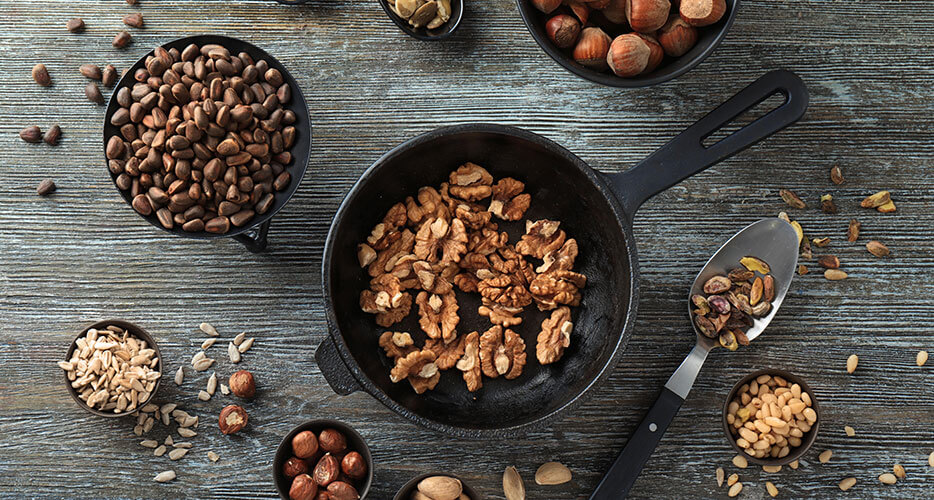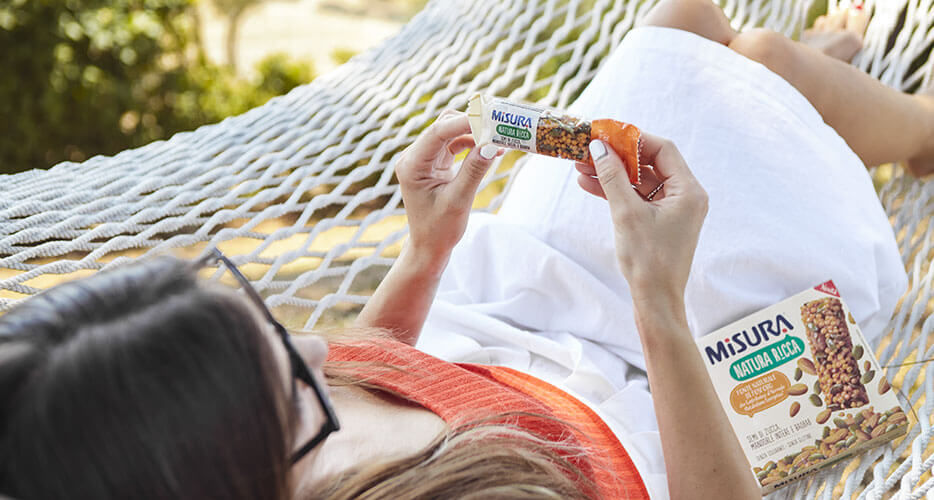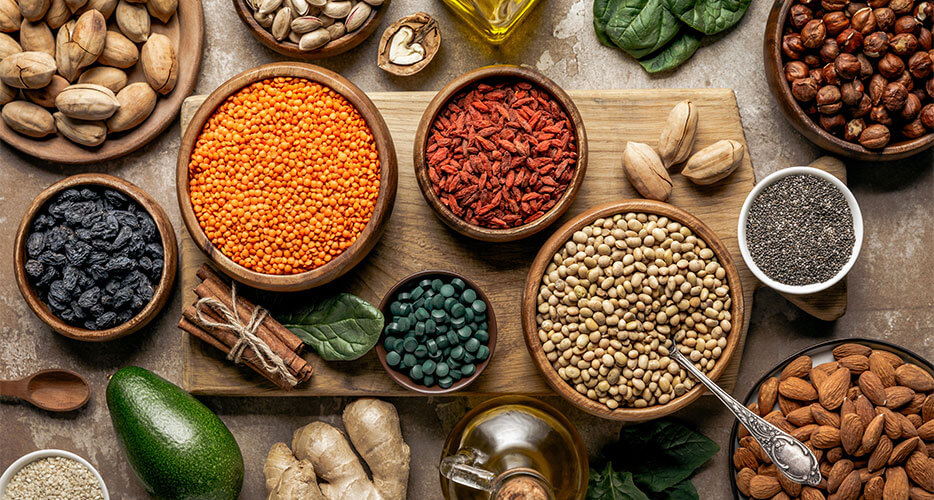
We often hear how important it is to insert snacks between the main meals, but finding your way around when you are away from home to combine satiety, health and practicality is not easy at all.
.
Misura's interview with Dr. Andrea Del Seppia
Let's discover all the benefits of dried fruit with our nutritionist, Dr. Andrea Del Seppia..
Dr. Del Seppia, why can it be useful to have a mid-morning and / or mid-afternoon snack?
The peculiarity of the snack is to be a valid aid in maintaining a balanced rhythm of meals: if the alternation is regular, on the one hand it will be easier to avoid exaggerations in the caloric intake during the day and therefore maintain an adequate body weight; on the other hand, the correct levels of energy and concentration necessary to carry out our daily activities will be guaranteed. Snack is useful if chosen appropriately: it should be seen as an opportunity to eat something healthy. Our hectic lifestyle, however, forces us to spend a lot of time away from home and this can make it more difficult to choose the meals properly. This puts us at risk of composing unbalanced snacks that break up the healthy connotation of the snack.
It is important to learn to make the right choices even when you are in a hurry and you have not had the chance to get organized in time, or when you cannot use a fridge or have the possibility to wash and peel the fruit.
The function of the snack in mid-morning and / or mid-afternoon is to avoid arriving at the next main meal with too much hunger, risking to eat more than we need. On the other hand, we must also prevent an excessive snack from making us reach lunch or dinner already satiated or with little appetite.
The latest trends see an increase in the consumption of dehydrated fruit, dried fruit, but also of oil seeds: what is it and what characteristics do these foods have?
Two factors are common to these foods: practicality and healthiness. In fact, all three have healthy properties and can be preserved for a long time without the need for a refrigerator. The properties of dehydrated fruit are different and, in a sense, complementary to those of dried fruit and oilseeds. With the term "dehydrated fruit" we refer to those fruits as berries, berries, apricots, etc. most of the water component was removed during the dehydration process. The nutrients originally present in fresh fruit, therefore, are "concentrated": the result is a product that, for the same weight, is clearly more sugary.
Dehydration is a good way to enjoy some of the beneficial actions of fruit even when it is not available fresh; it is necessary, however, to avoid overdoing the portions and not to consume the dried fruit on its own because it would cause a rapid rise in blood sugar levels. It is best to combine it with oleaginous foods such as nuts or seeds, which can lower the glycemic index and prolong the sense of satiety that results.
And compared to nuts and seeds?
These two groups of foods, ideal even before sport and as a snack, have similar characteristics and contain a good proportion of unsaturated fats, to be preferred over those saturated for cardiovascular health. In both cases the caloric density is high, so it is good to consume small portions. Dried fruits and seeds also contain a good proportion of protein and fiber, thus being very useful if consumed together with a sugar source so as to make the snack more balanced in nutrients. They also contain precious mineral salts (potassium, magnesium, calcium, phosphorus) and vitamins (in particular vitamin E).
The "dried fruit" category includes walnuts, almonds, cashews, peanuts, etc. The term "fruit", in this case, is a bit imprecise because we refer only to a part of the fruit (the walnut kernel is, more properly, a seed) or, even, to a legume, in the case of peanuts . The sunflower, flax, pumpkin, sesame seeds and also the pine nuts belong to the "oil seeds".

Is there an ideal snack model?
There are no categorical indications in this regard and there is no ideal snack for everyone and for all occasions. Surely, the caloric intake of the snack should be weighed according to the needs of each one and the size of the snack should also be adapted based on how long it separates it from the next meal.
In a balanced and complete snack, all the following components can be represented: carbohydrates, preferably with a low glycemic index (whole grains) or fruit sugars; fiber, to make satiety last longer; proteins, to make the meal more balanced and lower the glycemic index; a small portion of good fats (monounsaturated or polyunsaturated).
The sources of these nutrients will need to be suitably changed during the week, also based on the needs and seasonality. The simplicity and usability of the meal are basic factors to be taken into consideration, as they make it possible to maintain correct eating habits over time. "On the go" snacks are those practical snacks for those who are always on the move and away from home: they adapt to the individual's daily needs, allowing them to eat something healthy even if they don't have the time to prepare it. An excellent solution for a snack that also meets the need for practicality can be to choose bars that contain a mix of dried fruit, seeds and a small percentage of fruit sugars, or a package of wholemeal flour crackers to which add a handful of walnuts or almonds.
Read the full article on Misura® website
Read the article on Misura® official page
Link to Dr. Andrea Del Seppia page on the official Misura® website
Misura® is a registered trademark of Colussi S.p.A. The material reported in this article is the property of Colussi, who authorized its publication.

